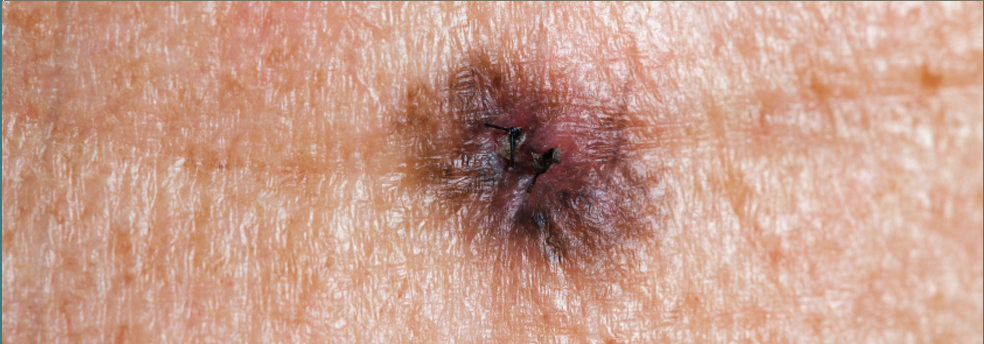Arrange a consultation
call our office: 703.865.6801
Fairfax, VA 22033

Patients interested in learning more about common skin conditions, and what can be done to treat them, will find our series of articles on skin care educational. Dwana R. Shabazz, M.D, M.P.H. is a regular contributor to FairFax Woman Magazine, where she posts a new article each month. Subjects include: (click on title below to view article)



May is Melanoma Awareness Month. Melanoma is probably the most familiar type of skin cancer. It is most common in fairer-skinned individuals, but it can occur in skin of color as well. Increased exposure to ultraviolet radiation is the primary reason for developing melanoma, but heredity plays a role as well. It is the skin cancer that can spread rapidly and is associated with many fatalities. However, if it is detected early, the cure rate is very high. The common detection tool for melanoma is the ABCDEs of melanoma:
- Asymmetry
- Border Irregularity
- Color Irregularity
- Diameter- mole > 6 mm
- Evolving mole
Basal Cell Carcinoma Basal cell carcinoma (BCC) is the most common skin cancer. Although it is slow-growing and rarely spreads throughout the body, BCC can spread locally and deep, thus destroying adjacent skin tissue and even bone. Unlike the asymmetric, irregularly shaped and colored moles of melanoma, basal cell carcinoma can:
- Bleed easily
- Will not heal
- Ooze or develop a slight crust
- Look like a crater
- Have prominent blood vessels within or around it
Squamous Cell Carcinoma (SCC) is the second most common skin cancer. Ultraviolet rays is the most common culprit. However, there are other causes to consider for SCC as well. While some of these characteristics can play a role in the development of the other skin cancers, they tend to be more associated with SCC:
- Some forms of human papilloma virus (HPV)
- Long term exposure to cancer causing chemicals (tobacco, arsenic, insecticides, etc.)
- Long standing ulcers/sores
Because of these exposures, SCC can occur on other parts of the body such as the inside of the mouth and genitals. SCC can occur as:
- A rough bump
- A dome-shaped or crusty growth
- A non-healing sore
- A flat scaly patch
In an effort to prevent or detect skin cancer early, one should
- Get an annual skin exam with your dermatologist
- Check your skin monthly for changing moles or growths
- Wear UV protectant sunglasses/clothing
- Wear sunscreen regularly
- Avoid direct sun exposure when sun is most intense (10 am- 2 pm)
- Stop (or do not even begin) tanning
Summary Many of the characteristics of the various skin cancers described can look like other benign lesions. If one is uncertain, the rule of thumb is to always get the growth in question evaluated by a physician. Even if the growth is a skin cancer, early detection may prevent long term complications.




